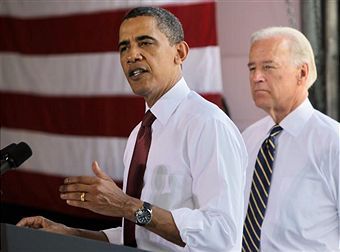 Having returned from Washington DC, where I spoke to a range of senior policy-makers
about Afghanistan and Pakistan, I am struck by how much confusion there is about what President Obama meant when he said that he wanted US combat troops return home in 2011. Did he mean that 2011
would allow the first assessment of the progress and his strategy and a tokenistic reconfiguration or forces? Or did he genuinely mean that the date would see the beginning of a real, if drawn-out
withdrawal?
Having returned from Washington DC, where I spoke to a range of senior policy-makers
about Afghanistan and Pakistan, I am struck by how much confusion there is about what President Obama meant when he said that he wanted US combat troops return home in 2011. Did he mean that 2011
would allow the first assessment of the progress and his strategy and a tokenistic reconfiguration or forces? Or did he genuinely mean that the date would see the beginning of a real, if drawn-out
withdrawal?
For what it is worth, I am convinced the US president meant the former. This is crucial to the UK, since so much of what the Britain does – and presumably much time was spent on this at the recent Chequers discussion – is about staying close to the US. If the US is looking to leave rapidly after 2011 and move to a Plan B, then the UK strategy should re-think what it ought to be doing now.
What is a Plan B? It is probably a re-hash of the proposals supposedly backed by Vice-President Joe Biden a year ago – a more limited, “kill-train-strike strategy” where international forces reposition themselves in the north, and around the capital Kabul. From there their focus will be to train the Afghan security forces, undertake Special Forces operations against Al Qaeda and assist the kind of drone attacks seen in Pakistan. It will be costly, open-ended, result in countless PR coups for Al Qaeda, be opposed by many in West, and permanently fragile. But with the odour of failure beginning to hang over Plan A – whatever the military chiefs are telling themselves and the Cabinet – Plan B is more likely the strategic destination the US will be heading towards in 2011. The question is whether the UK waits for the US to move or if it can position itself differently beforehand without alienating a key ally.






Comments